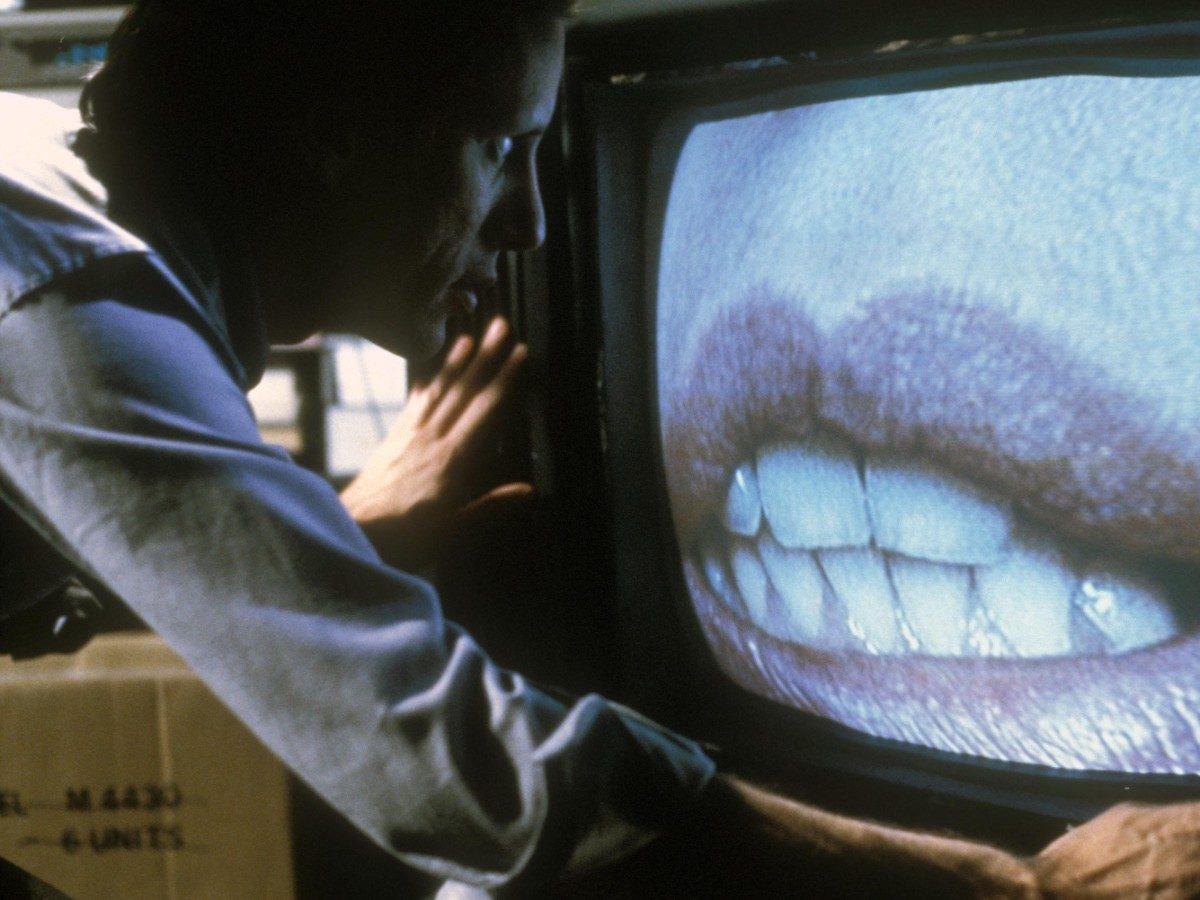
Outer Space is – together with L’Arrivée (1998) and Dreamwork (2001) – part of Tscherkassky’s “CinemaScope Trilogy,” which draws on fragments of Hollywood films. It utilizes footage from The Entity (S. J. Furie, 1981), a psychological horror film, in which the female protagonist is pursued by an invisible ghost. In Outer Space it is no longer an unknown entity against which the woman must struggle, but that portion of the filmstrip that is normally unseen when film is projected – the “outer space” of the film’s image, consisting of the optical soundtrack and its perforations.
“In half-light and fractured, staggering visuals, a young woman enters into a suburban house at night. As the door closes behind her, both the physical space and the surface of the projection begin to splinter, collapse and rupture. Spaces enclose and enfold, the female subject multiples and shatters across the screen, and the film itself screeches and tears as the sprockets and optical soundtrack violently invade the fictional world. Any semblance of a cinematic narrative is overwhelmed and assaulted, leaving it scattered in a thousand shards amid an entirely unique cinematic language. This is Peter Tscherkassky’s Outerspace. It is the most recent work of a filmmaker at the forefront of avant-garde film practice. And in its sheer filmic materiality it may seem to be an anachronism in a time of hype about new technological modes. Yet, Tscherkassky, strictly working in film as he has done for over two decades, continues to employ celluloid as a singular material with which to investigate theories of subjectivity, memory and perception, as well as the aesthetic limits of the cinematographic image. Tscherkassky sculpts with time and space, rhythms and arrhythmia in a way that feels like an entirely new film space, a new language altogether.”
Rhys Graham1
“A young woman, night, an American feature film. She enters a house, a dark corridor, a thriller. While she forces her way into an unknown space together with the viewer, the cinematographic image-producing processes go off the rails all around her. The rooms through which she goes telescope into each other, become blurred, while at the same time the crackling of the cuts and the background noise of the sound track – the sound of the film material itself – becomes louder and more penetrating. The pace becomes frenetic, the woman is being pursued by invisible opponents, she is pushed against a mirror, walls of glass burst, furniture tilts and the cinematographic apparatus which the heroine begins to attack in blind fury also suffers. The images jump and stutter, the perforation holes tilt into the picture, the sound track collapse inwards in a will o’ the wisp destruction scenario – something which only film can do so beautifully. In ten minutes Outer Space races through the unsuspected possibilities of cinematographic errors – a masterpiece.”
Stefan Grissemann2
“A woman, terrorized by an invisible and aggressive force, is also exposed to the audience’s gaze, a prisoner in two senses. Outer Space agitates this construction, which is prototypical for gender hierarchies and classic cinema’s viewing regime, and allows the protagonist to turn them upside down. […] Flickering images, everything crashes, explodes; perforations and the soundtrack are engaged in a violent struggle. […] The story ends in the woman’s resistant gaze.”
Isabella Reichert3
“Suggesting a convulsive hall of mirrors, Peter Tscherkassky's widescreen tour de force Outer Space reinvents a 1981 Barbara Hershey horror vehicle, leaving the original's crystalline surface intact only to violently shatter its narrative illusion. After Hershey enters a house at nighttime, sounds of crickets, static, and distorted music give way to explosions, screams, and garbled voices. In an eruption of panicked subjectivity, the actress's face multiplies across the screen as the frame is invaded by sprocket holes, an optical soundtrack, and flashes of solarized imagery.”
Kristin M. Jones4
- 1Rhys Graham, “Outerspace. The Manufactured Film Of Peter Tscherkassky,” Senses of Cinema, January 2001.
- 2Stefan Grissemann, http://www.tscherkassky.at.
- 3Isabella Reichert, http://www.tscherkassky.at.
- 4Kristin M. Jones, “Closing the American Century: The Avant-Garde in '99,” Film Comment, January 2000.

